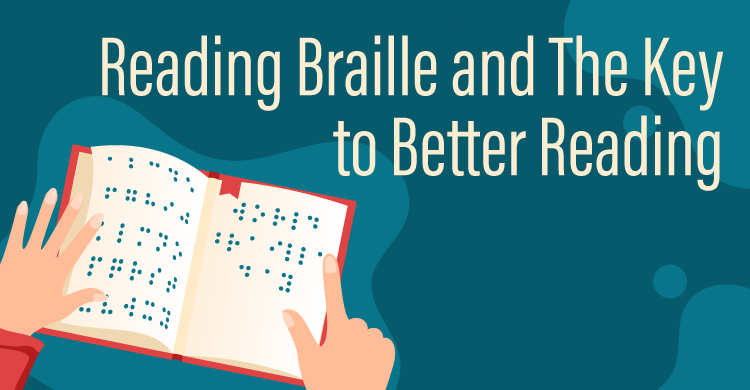Striking the balance of a focus on management and leadership is a daily dilemma for school and district leaders. Never has this been more critical or obvious than the school year that is finally coming to a close. Leading through a global pandemic has required leaders at all levels to make intentional efforts taking care of health and safety issues (management) while ensuring that student learning is a priority (instructional leadership).
The next school year will require all leaders and teachers to meet students where they are and to accelerate learning for all. It’s been well established that inordinate numbers of students need support to bolster their literacy capabilities. One avenue to cure this literacy malady is through strong leadership at all levels. Principals, district leaders, team leaders, instructional facilitators, and coaches can collectively help to combat the illness that plagues our students. How? By capitalizing on their roles for the betterment of teachers who directly interface with students day-to-day. It’s through the concerted efforts of all that will help to improve literacy rates so that students succeed in school and beyond. So, how do leaders assist teachers in making literacy a priority? What actions do you take? How can you champion the efforts? And lastly, how can leaders use the PLC process to further literacy goals?
Professional Learning Communities focus on learning by addressing four key questions:
1. What is it we want our students to learn?
2. How will we know if each student has learned it?
3. How will we respond when some students don’t learn it?
4. How will we extend the learning for students who have
demonstrated proficiency?
Through the PLC process, teachers work in collaboration to answer the four PLC questions. Leaders support this work by building understanding of both ‘why’ we collaborate and ‘what’ the work looks like. Leaders can model expectations through agendas, artifacts, and protocols. For example, lead teachers should be part of the school’s guiding coalition. This leadership team spends time together understanding the work associated with the four PLC questions. A cycle of learning includes clarifying what will be taught (essential outcomes), how students will be assessed, how to use data to create actionable next steps to meet students’ needs, and how to extend learning for those who are proficient. Leaders must have clearly defined goals as literacy champions. See the figure below for generic suggestions on how to begin the process.
| District Leader | School Administrator | Instructional Coach | Lead Teacher |
|---|---|---|---|
|
|
|
|
|
In A Leader’s Guide to Reading and Writing (Glass & Power, Solution Tree Press, 2021), the authors highlight nine areas to help you stay true to the major tenets of the PLC process and support teachers to improve literacy. Three examples of these areas are summarized below to help you consider initial next steps:
1) Establishing clarity about student learning expectations: How can leaders support teams in determining and understanding a guaranteed and viable curriculum? As leader, set clear expectations that collaborative teams will answer PLC question #1, What do we want students to know and be able to do? Teachers will need support in understanding how to determine essential learnings, how to unpack these for clarity, and why it is important that student-friendly learning targets are developed. Often, during our coaching work, we observe leaders expect this but have not established protocols or created a clear understanding of how to do this work. Teachers need support in pinpointing fundamental literacy skills and ways to scaffold learning for student success. School and district leadership teams collaboratively practice with protocols prior to setting expectations about what teachers must understand. Teachers often want to skip this step, stating that they know their standards and outcomes. Rather than leave it to chance, we highly recommended that you build capacity in this area in order for assessment, instruction, and interventions to align to grade-level expectations.
2) Examining assessment options for literacy: How can leaders create common understanding among teachers and teams that effective formative assessment practices are a necessity? Prior to beginning a literacy unit of instruction, teachers must develop an overall assessment plan. What should they pre-assess for background knowledge? How will they assess a certain learning target? How many small formative checks for understanding are needed? When will they expect deep understanding of the standard through a more summative assessment? Strong leaders create opportunities for teachers to realize the value of designing assessments before they teach so they can implement the tenets of backwards design. Focus on modeling and leading conversations that encourage teachers to think about and discuss the value of assessing. What information do they need the assessment to tell them? How will this assessment provide them with evidence of grade-level learning? Again, an intentional focus on both the why and what of the work will help teachers grow their own assessment practices.
3) Designing lessons using the gradual release of responsibility instructional framework: How do leaders ensure that teachers can design and deliver effective lessons? In our previous examples, first steps in literacy instruction take place when collaborative teams deeply understand what they want students to know and be able to do and how they will know if they are learning. Using the evidence from assessments, collaborative teams discuss next steps for teaching and interventions, which includes corrective instruction and extensions. Teacher planning does not stop there; once back in the classroom, teachers must be skilled at designing and delivering instruction that ensures student learning. Leaders can develop tight expectations for specific highly effective instructional strategies, for example, the gradual release of responsibility framework. During school visits, we often hear from leaders that they assume teachers are adept at instruction. This cannot be taken for granted. You would be wise to plan how to provide ongoing coaching and modeling of effective lesson design such as this framework. As in our previous example, a leadership team can share ownership of improving instruction by learning and practicing together. Effective leaders develop an “I do, we do, you do together, you do alone” mentality with an intentional focus on improving instruction.
As a leader, you have the ability to make a significant difference in the lives of not just literacy learners, but all learners in your team, school, and district. Set your intentions and expectations, and communicate them effectively. Provide necessary support and structures to allow teachers to capitalize on their strengths and address their weaknesses for the benefit of creating solid learners of literacy.






